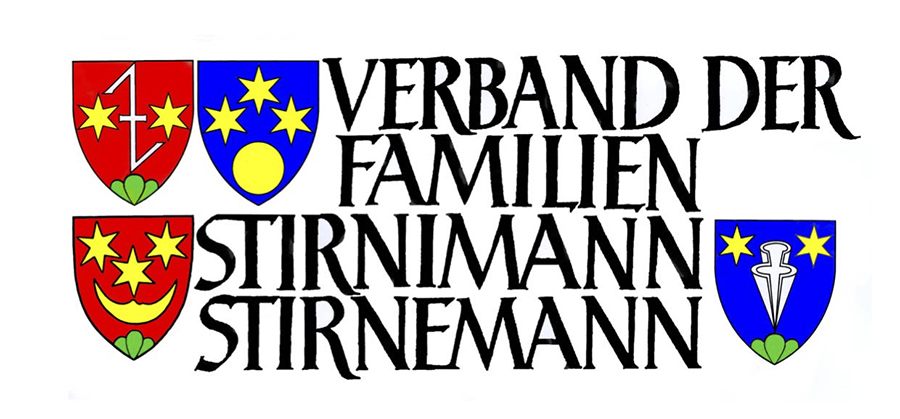

Newsletter No. 46 Luzern - Januar 2020
Table of Contents
Editor
Living in stories
Ghost story, family research
Association excursion Posieux FR
Interview
Impressions excursion
Appeal - necrology
Miscellaneous
Dear friends of the family association,
Dear relatives and members
In this newsletter we have collected eight pages of material that are closer or more distant to our large family. I hope you enjoy reading it.
The board wishes you a happy and happy new year. He particularly wishes you all health and wellbeing.
Moritz Stirnimann, President
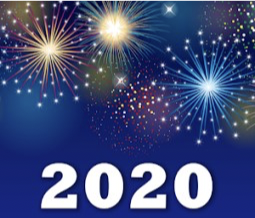
The editorial staff on their own behalf
Family research in the narrower sense has almost completely fallen asleep since the death of Prof. Joseph Stirnimann. Certainly there are still small-scale research activities in individual branches of the family, little but is brought to us. So the picture of the newsletter has changed. Heidy Schenker-Stirnimann and I, as President of the association, are responsible for the editing. We focus on “narrative history”. That is why I always write a portrait of a family member in the newsletter.
When compiling the texts, the editorial team became aware that a living newsletter is dependent on information that comes from the members. If you have any stories / anecdotes to tell, we would be happy to record or edit them for the newsletter. We look forward to speaking to you and are also happy to receive them.
How we know who we are - or how we live in stories
There are questions that probably everyone in life encounters. What's the point? Why is there anything at all and not simply nothing? Where do we come from? Where are we going? What is after life? Question after question, only the answers are not easy to give, and in times when the answers of the religions are no longer heard without contradiction, replacement answers of every color are in demand. I doubt whether they are truer because of this. Science is trying and producers of "alternative facts" contradict each other, and the apocalypse that climate change is causing is almost palpable in the media. So where do we go? …
As a family association, we address the opposite question: where do we come from? Is it a luxury to ask yourself this question, given the void we're moving towards? - The mere fact that we ask ourselves the question that we recognize ourselves as an association, as connected with each other, makes me optimistic. We recognize ourselves in a number of ancestors and ancestors, women and men, who have also been exposed to the crises of life. Ancestors who have always lived their lives, who believed in the majority by life, in difficult and easy times, who accepted the blows of fate and laughed tears with joy. Some of them may have broken down in hardness, while others grew on them. What our ancestors exemplified is also our task for the future: believe in it and work to ensure that humanity finds the way out of the crisis.
From the stories of my parents, mother and father, I know that relatives, the family, played a decisive role in both biographies. The relatives were looked after, Sunday after Sunday both families walked to relatives, closer and further away, one knew himself well beyond the core family, knew what moved and pressed the others. At that time you had to meet physically, the only alternative for a long time was the letter, a time-consuming and slow affair. Then the phone came on gradually and the older ones among you probably still remember the black wall-mounted units or the black table-top unit of the PTT. The modern means with which we communicate today were unthinkable in the 30s, 40s and 50s. Nevertheless, I believe that these visits to relatives, which took place as “physically” as I call it, had a different quality than the “virtual” that is common today. The commitment was different: you have seen people face to face as people.
What do I want to show with the example of my parents: Certainly not that everything was better in the past, but maybe in earlier times people were simply more dependent on each other in simpler living conditions than today. The relatives may have done more for the clan than is necessary today. But yesterday and today, the family, the relatives, into which we are born, are important and important to us: This is where most of them have their first experiences that establish identity. Identity is the answer to who we are. - If you don't have an answer, just take your identity card, it tells you. - In other words: You will find a first answer to this question: Who am I? But when we look closely, we see that they are stories that told us and the narrators were parents, grandparents, siblings, etc. Then this circle opens up and friends, people, that you were dealing with. And by the way, you also learned who your ancestors are, what your roots are. - Naturally, I am aware that there are biographies that have been completely different, less ideal, more tragic, possibly, with other narrators ...
But, and this is important to me: every biography is a story, an individual story and in this story there is a reference to the roots, namely when you give your family name.
These individual stories, which always tell of a person's life, are important to me, and I would like to publish some of them in this document. But I'm also interested in anecdotes and other stories. I found an example of this in a folder that Hans Stirnimann, Elektro, Ruswil, gave me. He found that in his mother's estate.
A haunted or ghost story in the Geissbach, municipality of Ruswil
In the parlor of the apartment building in Geissbach, the cradle and the toddler lying in it were always unexpectedly turned up in the broad daylight, as if knocked over by an invisible hand. People were startled and at a loss. They suspected an evil spirit and called the Dean of Ruswil to help him banish the spirit. The dean came. He did a prayer to tell the spirit to leave the house. Then the spirit replied to the dean in the presence of the house dwellers; "Just stay still, you once stole a Mutschli yourself"! Then the dean said to those present: "Unfortunately, I have to confess that I once stole a Mutschli as a young person". The Dean was aware that he was powerless against the spirit. Then the people let a capuchin come. This managed without difficulty to lock the ghost in a dungeon in the wall of the house. During a later renovation or during construction work, this dungeon was damaged (or opened), which immediately haunted the house again (I don't remember whether and what was done now).
This was what my great aunt Miss Katharina Stirnimann told me in the "Studen" in Nottwil around 1930. The great aunt had an excellent memory and often told of earlier times. It was built on November 25, 1857 in Ruswil in the "Hinteren Loch” (today Geschw. Rast ) born. On June 13, 1863, the father exchanged the property in the “Hinteren Loch” with that in the “fVorderen Loch ”. In the same year, on December 3, 1863, the family moved into the "Ober-Merzenberg" farm (today the Haas family). The Geissbach lies in the vicinity of these properties. According to the description of the major, the incident reported to the population of the area was fairly well known. It is quite possible that old people in or from the area may still know about it or provide further details.
Supplement: The dean mentioned could be the Russian pastor Josef Sigrist, who had been pastor there since April 5, 1823 and dean of the chapter since May 6, 1863 (Geschichtfreund Vol. 26, 1871, p.167).
Note: Unfortunately the tracked sheet has neither a date nor an author.
Family research in the “small"
The present message was sent by Urs Schocher from Schenkon to Beat Stirnimann, former President of the association. He looked for his great-great-grandmother and reports: “After I hadn't found any information when I first searched the Stirnimann newsletters, things suddenly went quickly. Thanks to the accessible church records on the Internet, the search was also easier. My great-great-grandmother was born on the Saalhof in 1839 as the daughter of Xaver (1815-1841) and Maria Küng (1817-1841). What confused me at first, in newsletter no. 4 it says that Xaver and Maria lost both children shortly before they died themselves. However, this seems to me to be misinformation. The marriage book states that Elisabeth Stirnimann lived in the Elischwand Nottwil. It seems she came to her mother's relatives after her parents' death, since she came from the Elischwand ”.
Question of the editor: What happened in the Saalhof in 1841 when a couple died at the age of 26 and 24? Prof. J. Stirnimann only wrote in newsletter No. 4, "the young couple had probably worn themselves out prematurely in the management of the large courtyard".
Association trip to Posieux in Freiburg on September 7, 2019
21 association members have registered for the association trip to our relatives Jean-Pierre and Zita Stirnimann. Together with brother / brother-in-law Bruno Stirnimann, the couple runs an impressive dairy and pig fattening business in Posieux.
Prolog
The idea for this trip came up two years ago on the association trip to Colmar, when Jean-Pierre Stirnimann discussed with other participants about agriculture and the milk price and explained what rapping meant to him more or less: “Chömid mol cho lie”!
Saturday morning eight o'clock. The world has just woken up. From Lucerne, a bus drives north on the A2. At Oftringen he changes to the A1 towards Bern. There is a lively crowd on board the car, 21 members of the association, women and men, who are looking forward to coffee in Kriegstetten on this sunny day - but the coffee in the Sternen restaurant may not inspire everyone, because the Gifted coffee is just a filter coffee and since the invention of fully automatic machines and the capsule system, the Swiss senses have refined. It can be something right, even with coffee! - Well then, the conversations at the tables of the old restaurant Sternen get going, and the tour guide warns to continue driving through the quite busy A1 through the Bernese midlands. After all, we pass the capital without traffic jams. At Bümpliz we switch to the motorway towards Friborg. We leave the Bernese agglomeration deserts behind. The asphalt belt winds through the green landscapes of the Bern region, later the fertile fields and expanses of the Freiburg region appear on the left and right. Passing villages, we reach Friborg, where we leave the motorway. The path first leads through the Fribourger Banlieu, then turns right onto the Kantonsstrasse Direction Posieux, where the vehicle turns sharply right into Impasse de Froideville after a few kilometers. - This is where my mobile rings and Jean-Pierre asks where we are. "In two minutes with you," was the answer, but it takes a little longer: A lady heavily loaded with shopping bags disabled our vehicle on the access road. We let her get in so that she no longer had to drag the last few meters. The lady turned out to be "la voisine du paysan", as she said. And there he is, the strong man, on the big square in front of the barn and instructs us.
Jean-Pierre and Zita greet us with a welcome aperitif. We warm ourselves in the early autumn sun with wine and small delicacies. A good dozen calves, some barely a few days old, draw attention to themselves. The first pictures are sent out into the world. Jean-Pierre takes the floor, explains one or the other, and then asks to the table. Our hosts spare no effort: Because of the weather uncertainty, they have rearranged the room and so we eat a hearty lunch à la mode du paysan fribourgois in the living room and kitchen. - The President's table speech on "Relationship and Being Related" was not too long. His little speech ends with thanks to Zita and “Hans-Peter”, who made the trip possible: Many thanks for the hospitality!
Afterwards, Jean-Pierre leads us through the large company, whose key figures impress: 80 hectares of our own land for feed production. 380 cows, 500 fattening pigs are maintained and looked after according to the most modern agriculture. That means the purchase of feed of an area of 210 hectares, 10,000 liters of milk per day in 32 milking parlors, and three milking robots are also in operation that milk trained and conditioned cows fully automatically. The animals stay in large free-range stalls, they move freely in outdoor enclosures. The rearing of the cattle is on Contract farmers outsourced, slurry purchase agreements exist throughout the region, there is a purchase agreement for the milk with the large dairy CREMO, for the pigs that we cannot see, with the large distributors.
Jean-Pierre says that we see here how milk is obtained in a large modern company. "This is the case for 90% of milk production in Switzerland". And when asked whether the animals also went to pasture, he says the animals were in the free-range stables. “Our cows don't run around on pastures, they have to give milk. This is modern milk production ”.
On the tour it becomes clear what it means to organize and run such a large company: a lot of work, foresight in planning and entrepreneurial courage.
After 3 p.m. we leave the courtyard and move to Friborg. After some back and forth looking for a parking space, the Autocar spits out its cargo and we sit down in an almost full "train" that promises us a city tour; we enjoy a stroll through the lively and historic town. The weather plays a wonderful light for us, Freiburg shows its most beautiful side, so that some may think, I will go there again …
We say goodbye to Zita and "Hans-Peter" around 5pm. The bus counts: Complete, everyone on board and Häsi, our driver, steers his vehicle towards the motorway. Some people feel tired. The traffic jam on the A1 takes place on time, does not bother some and makes others patient. In Sursee we leave the A2, say goodbye to the first group, then we drive home through our home countries at dusk: Buttisholz, Ruswil, Emmenbrücke, Luzern.
I thank everyone who went with me. Thank you for enriching our association life "ond gärn again emol”!
Moritz Stirnimann, President
Interview with Jean-Pierre Stirnimann
The grandfather of Hans-Peter and Bruno Stirnimann, Josef Stirnimann * 1868. He probably grew up in Buchrain, was a carpenter and spent many years on the roller. During his hiking years he marched through Germany to Poland, got hired here and there, helped to build houses and barns. He often learned about cows at farms and often treated sick animals. Hans-Peter says that he was something of a "cow whisperer" and that he had returned to Switzerland with some savings. In 1919 he acquired the Unterlinggen farm in Ballwil. The 4 hectares including real estate, property and livestock had cost 79,000 francs at the time. In the early 1920s he married Maria Greter from the “Bühl” farm in Ebikon. In 1926 his father Josef was born as the only child of the couple. In the 1950s, the business passed to the father, who married Maria Bühlmann from Emmen in 1953, with whom he had 11 children. 10 reach adulthood. Hans-Peter is the third child, Bruno the fifth. The big family lives in strict Catholicism. But the four hectares were not enough for a farmer in the 1970s, and the farm is close to the village, and it is not possible to buy land. Unterlinginggen is sold to the municipality in 1975. During this time, Hans-Peter is doing his agricultural apprenticeship year in the Welschland in Freiburg. In 1975 a 50 hectare farm can be acquired in Posieux (40 hectares of arable land, 10 hectares of forest), which is also well located in terms of accessibility. In 1976 the family moved, 3 children stayed in Ballwil. In 1982 the mother died, who had worked an incredible amount. The youngest child is just 11 years old. In 1984 Hans-Peter and Bruno took over the mixed business from the father, first on lease, in 1988 the father bought it again, and the father remarried and moved to a pig farm in St. Antoni FR. He dies in 2008.
Hans-Peter Stirnimann (* January 17, 1957) and Bruno (* September 3, 1961) systematically transform the company into a modern and specialized production company in dairy farming and pig fattening. Bruno, who comes after the grandfather, takes care of everything that concerns the cows, Hans-Peter the pigs and the Maintenance of machines and buildings. In addition, he is involved in the community and cultivates “external relations”. He becomes a councilor and fire brigade commander. Today he is still a fountain master. German-Swiss don't have it easy here; I was always careful, be careful not to teach me words, actions work better.
He met his wife, Zita Böni from Mosnang SG, in the country youth, of which he was the Swiss president. The young woman was in rural youth exchanges in Welschland when they met, and there was no provision for her to stay there. She is the classic woman in the house and kitchen. She takes care of the sheep, the large garden and takes care of the grandchildren more and more and is involved in the local gymnastics club. Hans-Peter is interested in the sport of swinging and is involved in the association. He is also a proud Stirnimann: straight, stubborn and always a little “with the grind” on the border, as he says himself.
Impressions
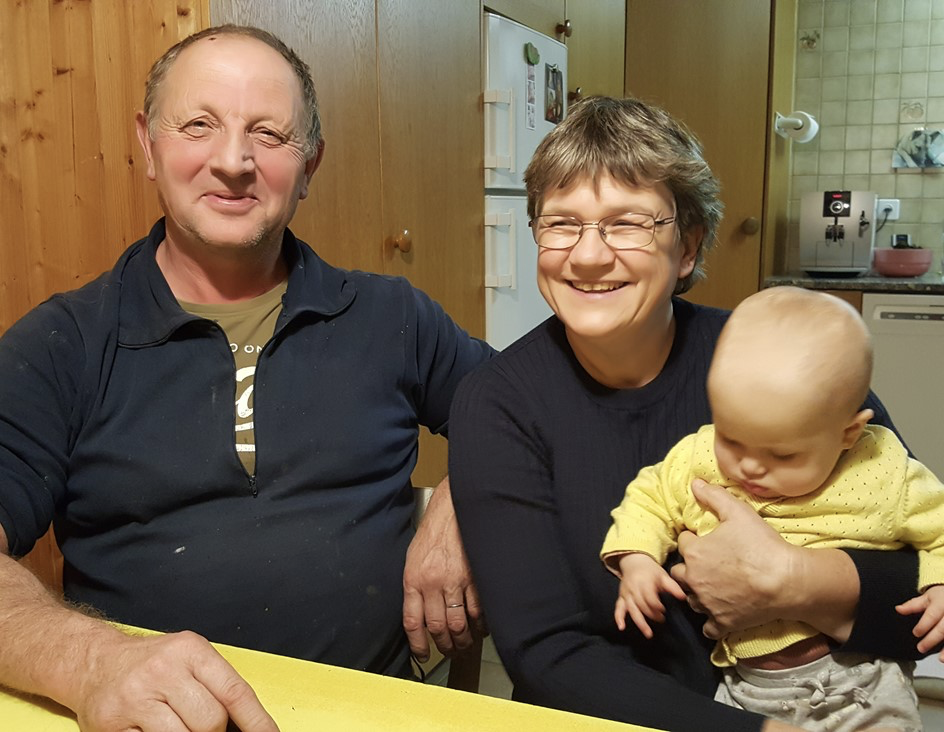
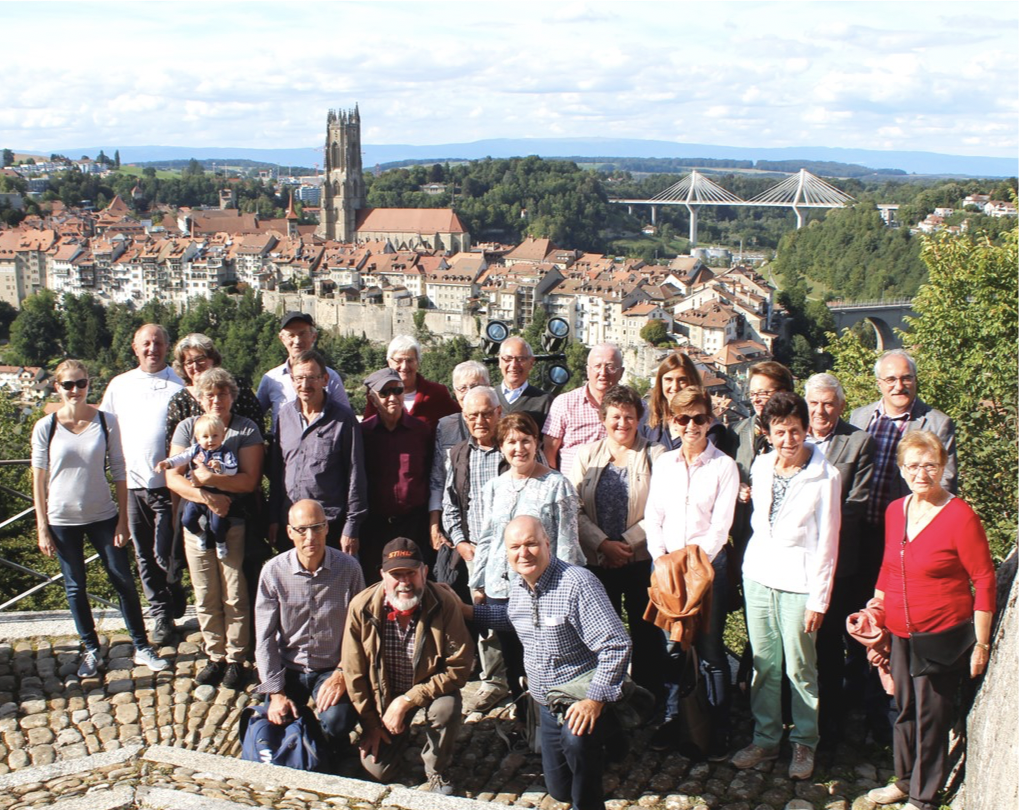
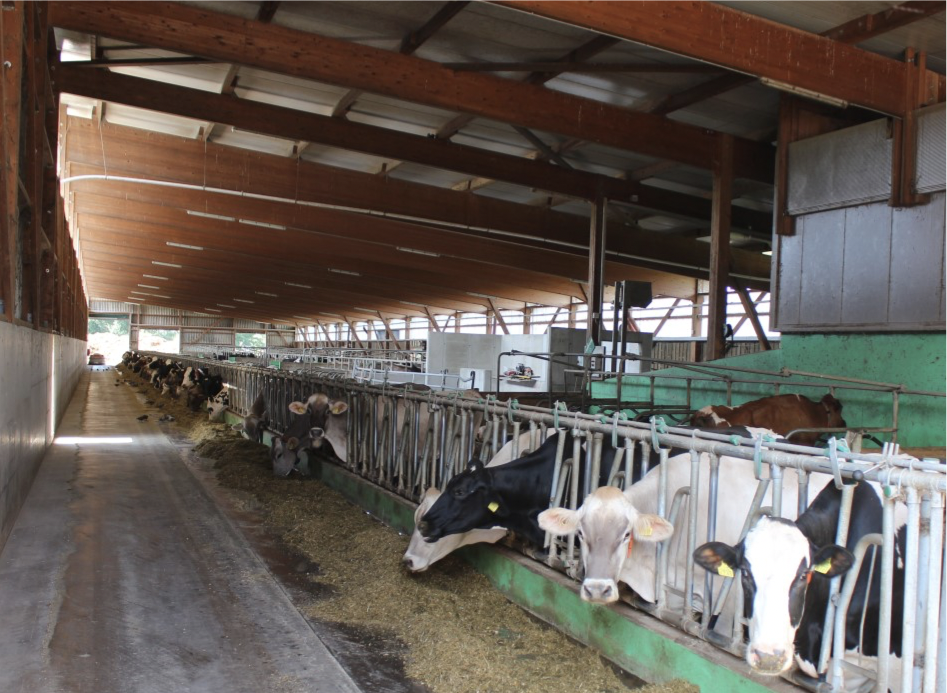
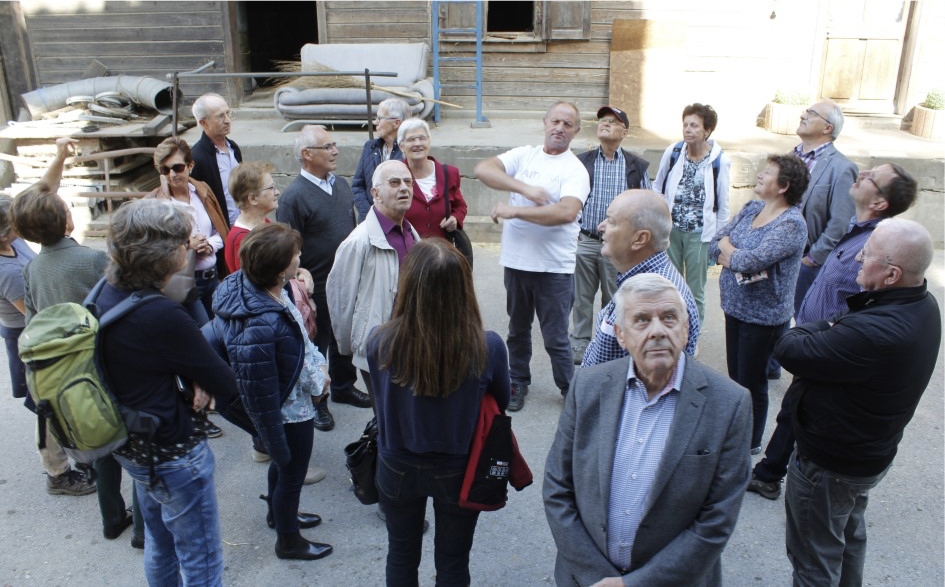
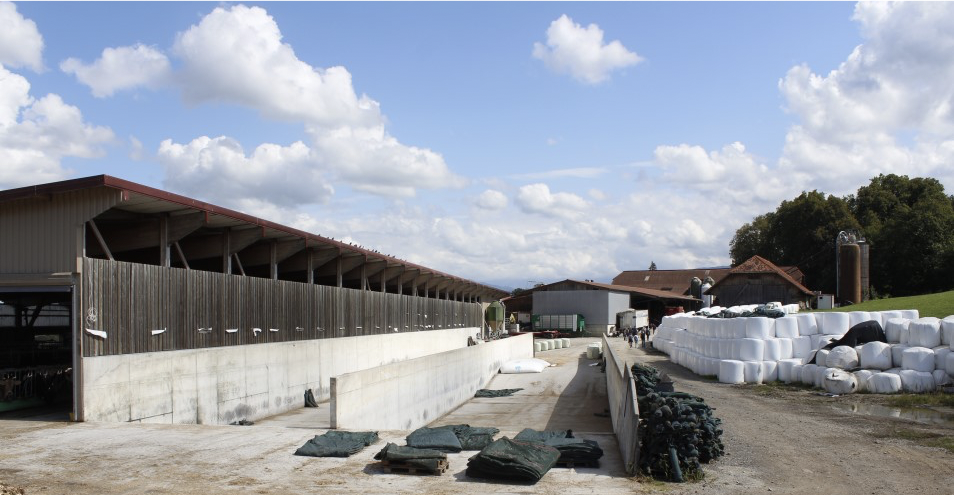
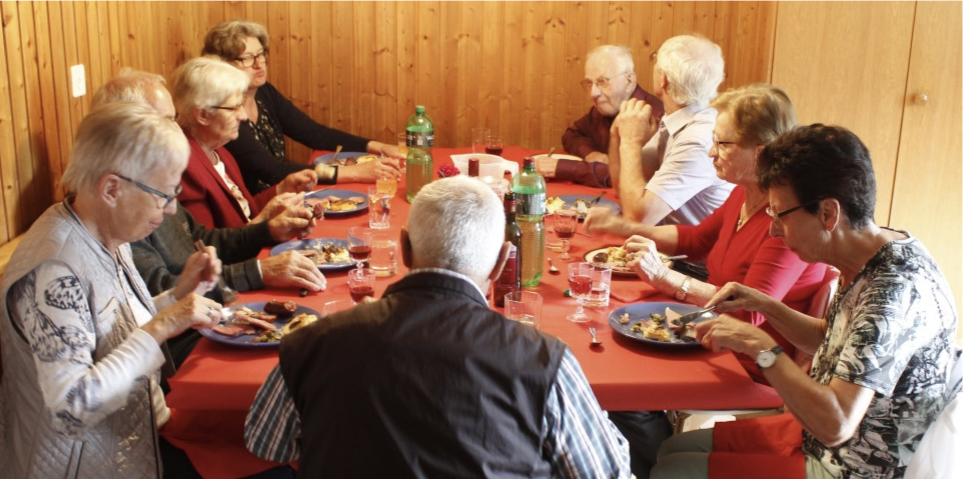
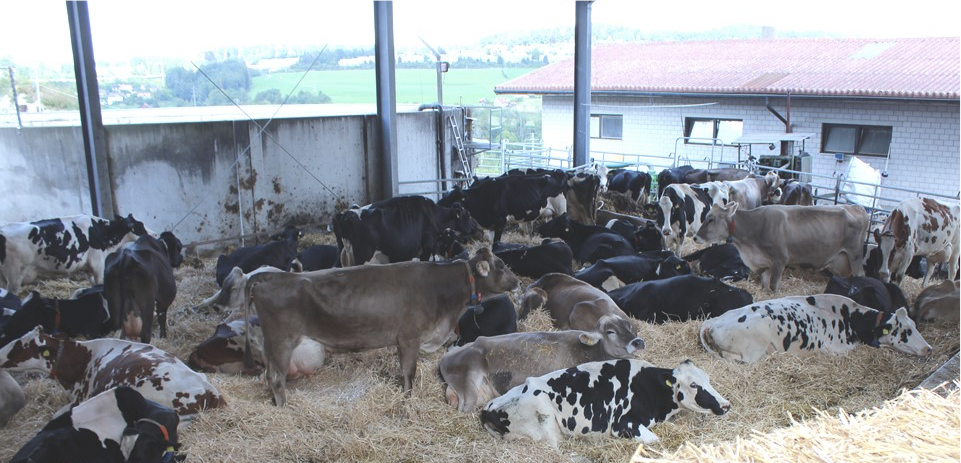
Who from the Stirnemann branch can help further?
The following email (shortened) was received on February 9th, 2019:
I (Marco Stirnemann) am looking for my ancestors and distant relatives. As a Stirnemann, I quickly came across your family association during my research and the book "The Family Stirnimann in the Cantons of Lucerne and Aargau" by Prof. J. Stirnimann from 1973. The book that I have meanwhile read I read with great interest, describes very impressively the spread of Stirnimann / Stirnemann in the early modern period. Unfortunately, it didn't give me an answer as to when and how the Stirnemann came to Kirchleerau, the home town of my family branch. So far I only know that this must have been before 1552 and that from then until the 20th century, Stirnemann must have lived in Kirchleerau.
With the help of citizen registers and church registers, I have been able to create a family tree of the Kirchleleauer Stirnemann, which goes back to the 17th century. Unfortunately, the entries in baptism, marriage and death before 1670 are not very detailed and the lack of information makes it very difficult to compile the family tree. It would therefore have been interesting, of course, if someone in your family had already dealt with the Kirchleerauer Stirnemann or even came from this branch.
I would be very happy to exchange ideas with someone who has dealt with the Kirchleleau Stirnemann.
(E-mail coordinates are known to the editor.)
The Association President received the following email on June 12, 2019
My name is Joanne Sternaman [...]. I believe we are related. In the U.S. we have a few different spellings. I would love to join the family association [...] We might be in Switzerland next year and would love to meet some more family. I met a young girl on a train in Switzerland that told me your spelling is the spelling of my last name there. [...] I have looked back at the family and they seem to come from Bern, Alsace, France and Lucerne.
Welcome Joanne in our association!
About life and death
In silent mourning we say goodbye to our board member Urs Stirnemann, Zurich. He died of illness on January 29, 2019 at the age of 60. We offer our deepest sympathy to his family.
We had known Urs for many years. In 2018, he joined the board instead of his father. He was a representative of the Stirnemann branch, the place of which is now vacant.
We received reports of deaths again this year. We thank the relatives for the notification and offer our sincere condolences to everyone. The Lord grant eternal rest to all who have died - And the eternal light shines for you - He let them rest in peace.
New members
We call on our members to make family members, children and grandchildren aware of the association and to motivate them to join. It is also possible to give away membership !! The board is happy about every new member!
Call to members
Stories that have been told in the family can still exist many. We motivate you to send such traditions to the President. If you have any stories / anecdotes to tell, the President is also happy to record or edit them for the newsletter. We look forward to reports and mailings to info.familienverband@bluewin.ch).
Thanks from the President
At this point, I would like to thank all of my board members, including the auditors, for their cooperation and for thinking along with our ideal company. At a time when clubs, parties, and communities complain that it is difficult to find volunteers for offices, I want to give you an honest one "Thank you very much”.
Your President Moritz